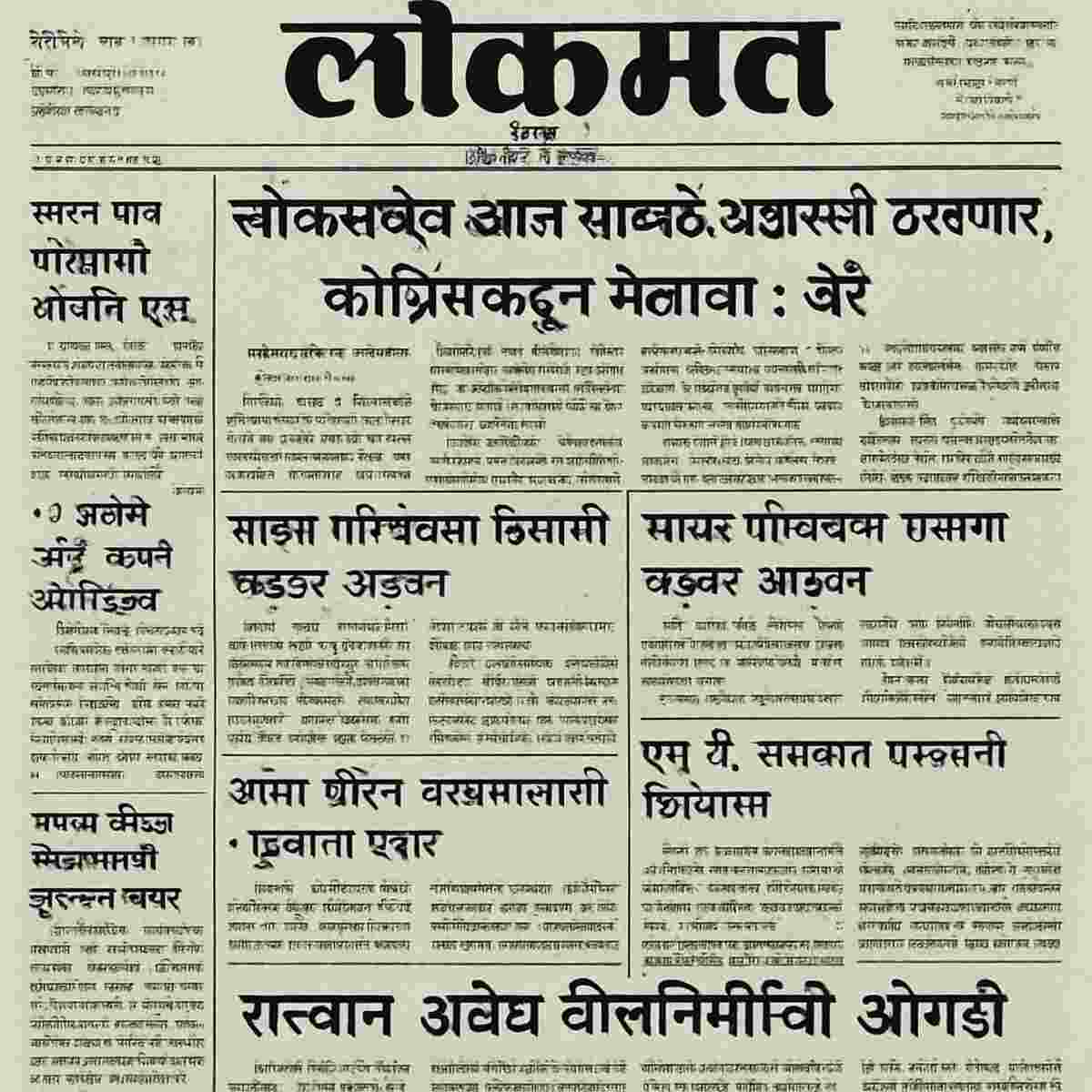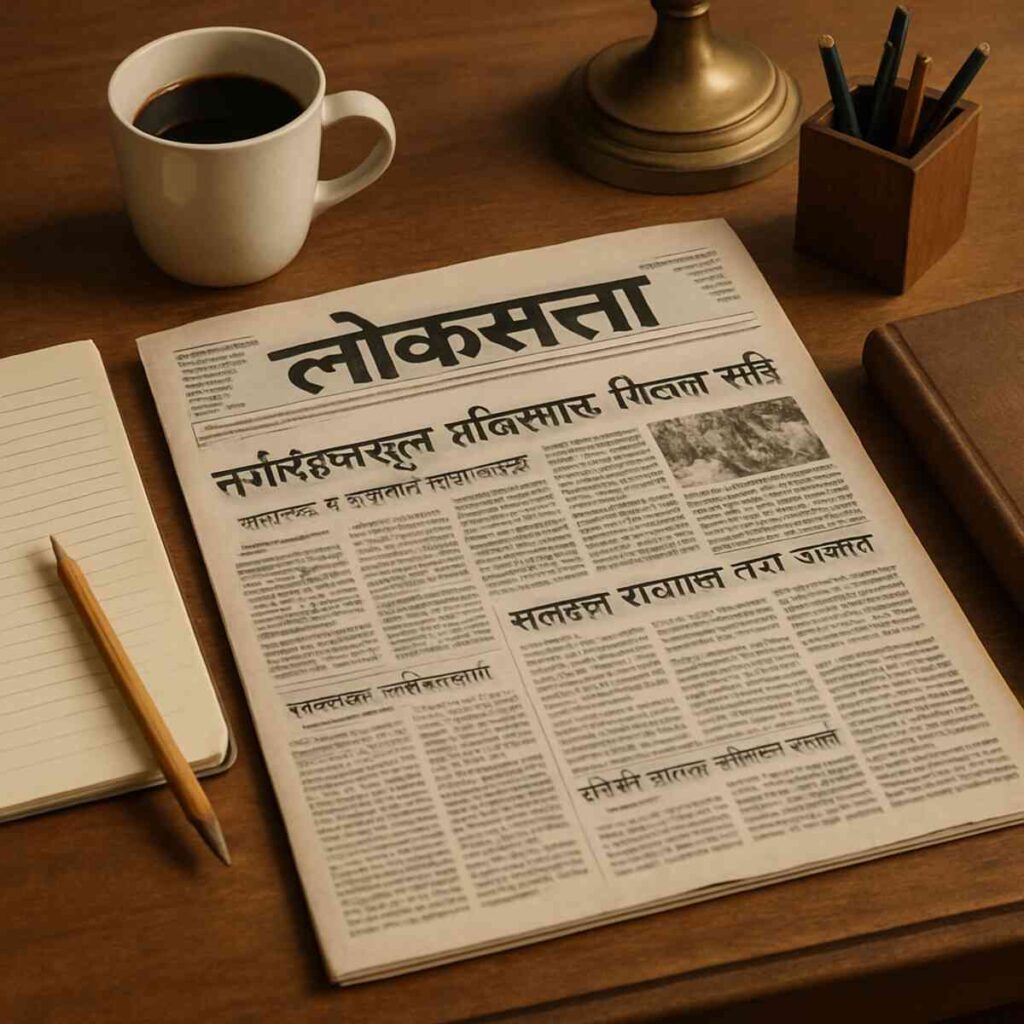Punyanagari Newspaper: A Cultural Chronicle

Hey there! Ready to dive into the fascinating world of the Punyanagari Newspaper? Whether you’re an aspiring novelist, a content marketer, or a graduate student, understanding the role of this Marathi newspaper can be quite enlightening. Let’s explore how Punyanagari is more than just news-it’s a cultural chronicle that can enhance your writing and storytelling skills.
Get the latest and breaking Bangla News, ব্রেকিং বাংলা নিউজ on newsosis.com. বাংলার প্রতিটি বড় খবর আর ছোট হেডলাইন, সব একসাথে পাবেন এখানেই! এখনই চোখ রাখুন সর্বশেষ আপডেট পেতে।
The Punyanagari Newspaper is a beloved publication in Maharashtra, known for its rich cultural content and in-depth coverage of local events. It’s a staple for Marathi-speaking communities, offering everything from current events to deeply rooted cultural stories. For anyone interested in developing a deeper understanding of Marathi culture or honing their skills in cultural storytelling, Punyanagari is a treasure trove.
A Window into Marathi Culture
Reading Punyanagari is like opening a window to the vibrant world of Marathi culture. From traditional festivals to contemporary societal issues, it captures the essence of what it means to be part of this dynamic community. The newspaper offers detailed accounts of events like Ganesh Chaturthi, Diwali, and local fairs, presenting them with historical context and modern interpretations. As a writer, engaging with such content can provide a wellspring of inspiration for character development and setting in your narratives.
Moreover, the newspaper delves into the societal norms and evolving trends within the Marathi community. It covers changes in family structures, education, and lifestyle choices, all of which paint a comprehensive picture of contemporary Marathi life. This cultural backdrop can be a rich resource for developing storylines that resonate with authenticity.
In addition to cultural festivals and societal trends, Punyanagari also explores local arts and crafts, showcasing the creativity of Maharashtra’s artisans. This exposure to indigenous art forms can enhance a writer’s ability to incorporate authentic cultural elements into their work, making stories more relatable and engaging.
The Historical Significance of Punyanagari
Punyanagari is not just a newspaper; it’s a historical record of Maharashtra’s cultural evolution. Established decades ago, it has chronicled significant events and transitions within the region, from political shifts to cultural renaissances. Understanding its history can provide insights into the perseverance and resilience of the Marathi community.
The newspaper’s archives offer a glimpse into past events that have shaped the present. By studying these records, writers can draw parallels between historical occurrences and current societal dynamics, enriching their narratives with depth and context.
Furthermore, Punyanagari’s role in documenting the lives of prominent Marathi figures-writers, politicians, and artists-provides a treasure trove of biographical material. These stories of influential personalities can serve as inspiration for character development, allowing writers to create multifaceted, compelling characters.
Why Punyanagari Matters to Writers
For those who are crafting stories, whether they’re novels, content pieces, or academic papers, understanding cultural nuances is key. Punyanagari not only informs but also educates its readers about the subtleties of Marathi life, language, and traditions. This knowledge can be instrumental in creating authentic, engaging dialogue and settings in your work.
The newspaper’s emphasis on language is particularly beneficial for writers. Marathi, with its rich idiomatic expressions and proverbs, can add a layer of authenticity to dialogues. By immersing themselves in Punyanagari, writers can learn to weave these linguistic elements into their narratives, enhancing the realism and relatability of their characters.
Additionally, Punyanagari often features opinion pieces and editorials that tackle complex social issues. These articles can serve as a model for crafting persuasive and thought-provoking content. Writers can learn how to present balanced arguments and explore multiple perspectives, skills that are crucial in both fiction and non-fiction writing.
How Punyanagari Can Enhance Your Writing Skills

So, how exactly can this newspaper help you become a better writer? Let’s break it down.
Structuring Your Story
One of the challenges many writers face is structuring their stories in a way that captivates readers. Punyanagari’s articles often follow a clear, logical structure that can serve as a guide. By studying the way these articles are crafted, you can learn how to present information in a way that’s easy to follow and understand.
The narrative techniques used in Punyanagari can help writers understand the importance of pacing in storytelling. Whether it’s a news report or a feature story, the newspaper demonstrates how to maintain reader interest by carefully unfolding events and revelations. Writers can apply these techniques to keep their audience engaged from start to finish.
Moreover, the newspaper’s use of headings, subheadings, and bullet points can teach writers how to organize content effectively. This clarity in presentation is crucial for both creative and professional writing, ensuring that readers can easily navigate and comprehend the material.
Furthermore, Punyanagari’s ability to weave multiple storylines into a cohesive narrative can inspire writers to experiment with complex plot structures. By analyzing how different articles are interconnected, writers can learn to juggle multiple plotlines in their own work, creating richer and more dynamic stories.
Developing Rich Characters
The stories and interviews featured in Punyanagari are filled with diverse characters from all walks of life. By reading about these real-life individuals, you can gain insights into character development. Think about what makes these people tick, what drives their actions, and how you can incorporate similar depth into your fictional characters.
Punyanagari often highlights the personal stories of individuals who have overcome adversity or achieved remarkable success. These narratives can provide inspiration for creating compelling protagonists and antagonists. By understanding the motivations and challenges of real people, writers can craft characters that resonate with authenticity and complexity.
The newspaper also explores the cultural and social contexts that shape individuals, offering a nuanced understanding of character backgrounds. Writers can use this knowledge to create characters with rich backstories, enhancing their believability and relatability.
In addition, Punyanagari’s focus on diverse voices and perspectives can help writers develop a more inclusive approach to character creation. By representing a wide range of experiences and identities, writers can create stories that reflect the diversity of the real world, appealing to a broader audience.
Crafting Engaging Dialogue
Dialogue can make or break a story. The conversations depicted in Punyanagari provide a natural flow and authenticity that can be challenging to recreate. Pay attention to the nuances of the Marathi language as it’s used in these dialogues. It can help you craft conversations in your writing that feel genuine and relatable.
The newspaper’s interviews and feature stories often showcase conversational exchanges that reveal character traits and advance the narrative. Writers can learn how to use dialogue to convey information subtly, avoiding exposition dumps and maintaining reader engagement.
Additionally, the cultural expressions and idiomatic language featured in Punyanagari can enrich dialogue, adding authenticity and depth. Writers can incorporate these elements to create conversations that reflect the cultural context of their stories.
Furthermore, Punyanagari’s exploration of different dialects and regional variations within Marathi can enhance a writer’s ability to create distinct character voices. By embracing linguistic diversity, writers can add layers of complexity to their characters, making them more memorable and engaging.
Practical Tips for Aspiring Writers

Now that we understand the wealth of knowledge embedded within Punyanagari, let’s look at some practical tips you can apply to your writing process:
Embrace Cultural Context
When writing, especially in a culturally rich language like Marathi, it’s important to embrace the context. Don’t shy away from using cultural references or idiomatic expressions you come across in the newspaper. They add authenticity and depth to your writing.
Cultural references can serve as powerful tools for creating vivid imagery and setting the tone of your narrative. By incorporating elements like traditional attire, local cuisine, and regional customs, writers can transport readers into the heart of the setting, enriching their reading experience.
Moreover, understanding the cultural context can help writers navigate sensitive topics with respect and accuracy. By drawing inspiration from Punyanagari, writers can explore themes like social justice, gender roles, and community dynamics with nuance and empathy.
Additionally, engaging with cultural context allows writers to challenge stereotypes and promote cultural understanding. By presenting a balanced and informed portrayal of different communities, writers can contribute to a more inclusive and empathetic literary landscape.
Break Down Complex Ideas
Whether you’re writing a novel or a marketing piece, breaking down complex ideas into simple, digestible parts is crucial. Notice how Punyanagari explains intricate cultural topics in an accessible manner. Try mimicking this approach in your own writing to make complicated subjects more approachable for your readers.
Punyanagari often uses analogies and metaphors to simplify complex concepts, making them relatable to a broad audience. Writers can adopt this technique to clarify abstract ideas and engage readers’ imaginations, enhancing their understanding and enjoyment.
The newspaper’s use of visual aids, such as infographics and illustrations, can also inspire writers to incorporate multimedia elements into their work. By complementing text with visuals, writers can create more dynamic and engaging content, appealing to diverse learning styles.
Furthermore, Punyanagari’s emphasis on storytelling can serve as a model for making information memorable. By weaving facts and figures into compelling narratives, writers can captivate their audience and ensure that their message resonates long after the reading experience.
Exercise: Write a Cultural Piece
As an exercise, pick a recent article from Punyanagari and write a short cultural piece inspired by it. Focus on capturing the essence of the story and the characters involved. This practice will not only enhance your understanding but also improve your ability to convey cultural nuances in your writing.
Start by identifying the key themes and messages of the article, considering how they relate to broader cultural and societal issues. Reflect on the perspectives and voices represented, and think about how you can incorporate similar diversity into your own writing.
As you craft your piece, pay attention to the tone and style of the original article. Consider how the language and structure contribute to its impact, and experiment with these elements in your writing. This exercise can help you develop a more versatile and adaptable writing style, capable of capturing different moods and contexts.
Finally, seek feedback from peers or mentors who are familiar with Marathi culture. Their insights can provide valuable guidance and help you refine your ability to convey cultural authenticity in your writing.
Conclusion
Incorporating insights from the Punyanagari Newspaper into your writing practice can significantly enhance your storytelling skills, whether you’re developing novels, content, or academic papers. By understanding and embracing the cultural depth of Marathi society, you’ll be better equipped to create authentic and engaging narratives. So, grab a copy of Punyanagari and start exploring the rich tapestry of stories waiting to inspire you!
Happy writing, and may your stories resonate with the cultural vibrancy that Punyanagari so beautifully chronicles.

